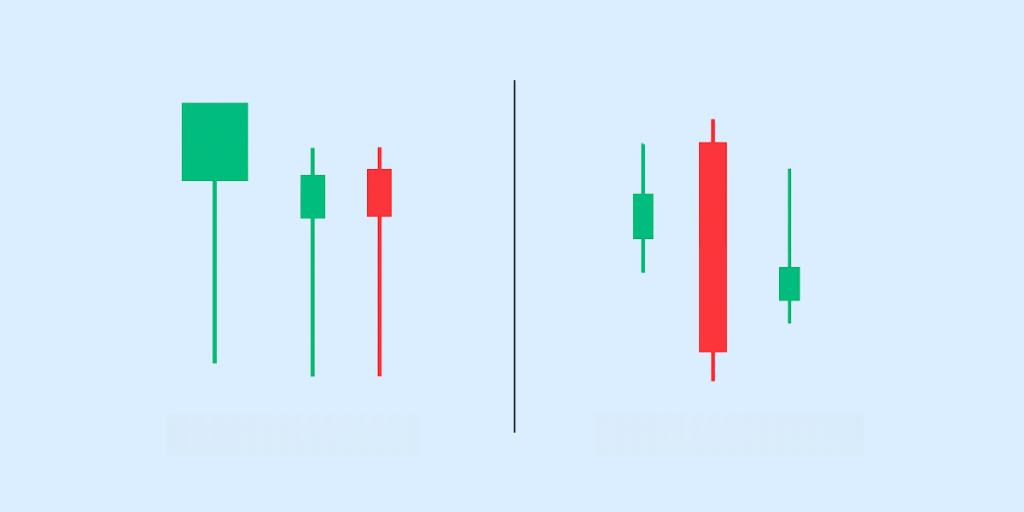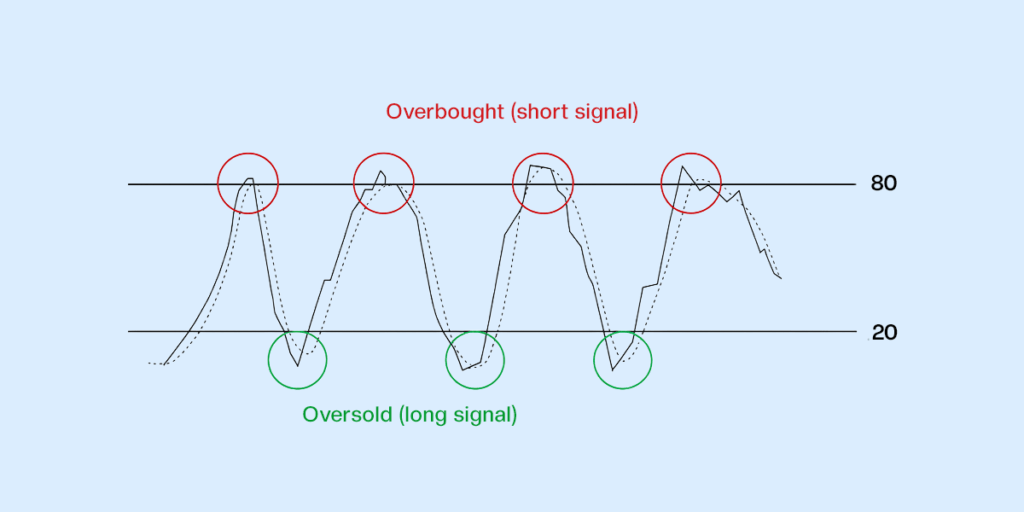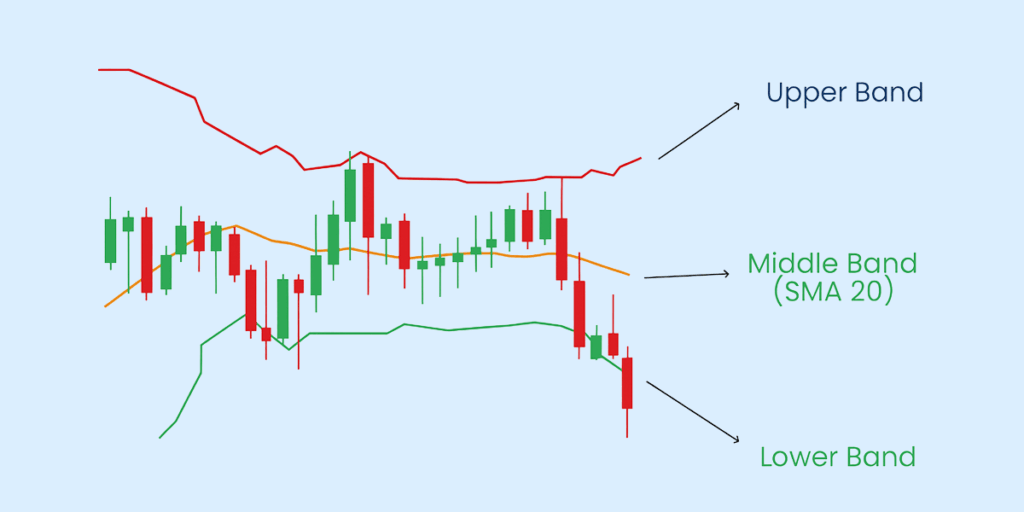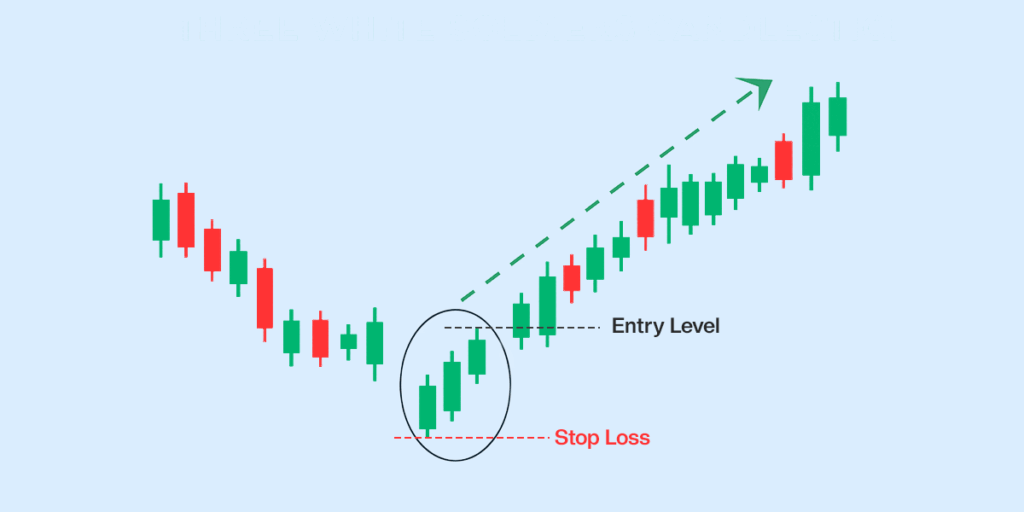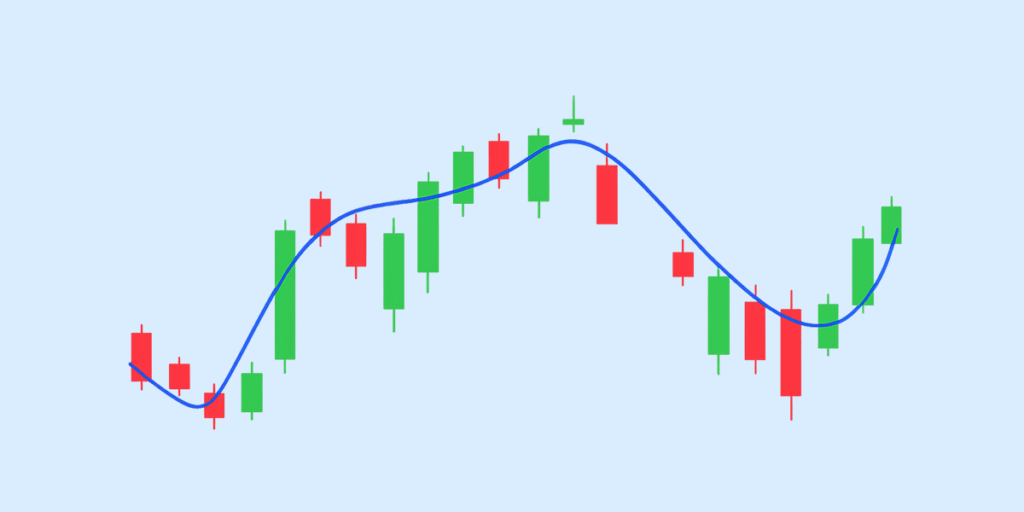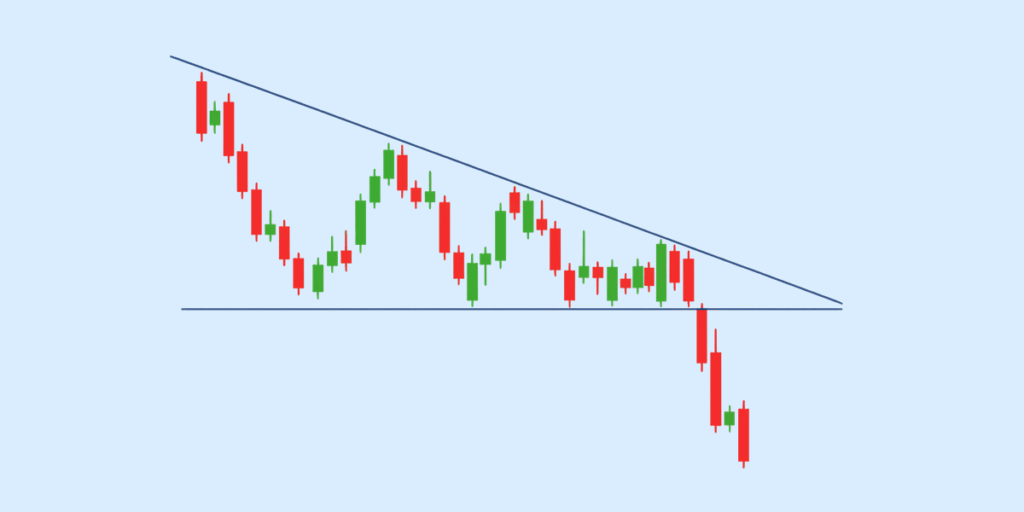Quick Summary:
Stock market indices are benchmarks used to track the overall performance of a specific market or segment. They help investors understand broader market trends and the general health of the economy. Major US indices include the S&P 500, the Dow Jones Industrial Average (DJIA), and the Nasdaq Composite Index. Investors can gain exposure to these indices through index funds and Exchange Traded Funds (ETFs).
What is a Stock Market Index?
A stock market index is a tool that simplifies this process by providing a snapshot of how certain segments of the market are performing. Let’s understand this a little more.
Definition of Stock Market Index
A stock market index is a statistical measure that tracks the performance of a particular sector of the share market. It comprises selected stocks representing a particular market or segment, such as technology or healthcare. Simply put, if the prices of the stocks within the index go up, the index rises, and if they go down, so does the index.
Types of Stock Market Indices
Stock market indices come in various forms, each serving a unique purpose. Here’s a quick look at the most common types:
- Sectoral Index: This type focuses on specific industry sectors. For instance, the NSE Pharma index tracks the performance of pharmaceutical companies.
- Benchmark Index: These are the most well-known indices, such as the Nifty 50 and BSE Sensex. They track the top-performing stocks in a market, providing a reliable gauge of overall market performance.
- Market Cap Index: This index is based on companies’ market capitalisation, which is the total market value of their outstanding shares.
The S&P 500 Index
The S&P 500 Index is vital for understanding the broader market and is a benchmark for many investment strategies. Let’s explore what the S&P 500 is, how it’s constructed, and why it matters.
Overview of the S&P 500
The S&P 500 Index—established in 1957—tracks 500 of the biggest publicly-traded companies in the U.S. This index covers almost 80% of the total U.S. stock market value, making it a comprehensive gauge of overall market performance.
It includes a diverse range of industries, providing a broad view of how the market is performing. Investors often use the S&P 500 as a benchmark for evaluating their investment portfolios because it represents a significant portion of the market.
Composition and Selection Criteria
The criteria for selecting the companies for the S&P 500 are:
- Market Capitalization: Companies must have an unadjusted market cap of at least $13.1 billion and a float-adjusted market cap of $6.55 billion.
- Liquidity: The stock must be sufficiently liquid, meaning it should be actively traded and have a reasonable price.
- Sector Representation: Companies should represent their industry sector well, ensuring the index reflects diverse industries.
- Public Float: At least 10% of a company’s shares must be available for public trading.
Weighting Methodology
The S&P 500 uses a market capitalization-weighted methodology. This means that the larger the company, the greater its impact on the index’s overall performance. Here’s how it works:
- Calculate Market Cap: The market cap of each company is assessed by multiplying the stock price by the number of outstanding shares.
- Determine Index Weight: Each company’s weight in the index is its market cap divided by the total market capitalisation of all the companies in the index.
Significance and Usage
The S&P 500 is often considered one of the best representations of the U.S. stock market. It provides a snapshot of major companies’ performance, which can indicate broader economic trends.
Also, because of its comprehensive coverage and the weighted impact of larger companies, it serves as a key benchmark for investors. Many use it to assess their investments’ performance and make informed decisions based on overall market trends.
The Dow Jones Industrial Average (DJIA)
This is a prominent stock market index known for tracking some of the largest and most influential companies in the United States. Here’s a closer look at what the DJIA represents, how it is constructed, and why it matters.
Overview of the DJIA
The DJIA, often referred to simply as the Dow, was introduced in 1896 by Charles Dow and Edward Jones. Initially, it included just 12 companies, focusing on key industrial sectors. Today, it tracks 30 major U.S. companies known for their significant economic and stability impact.
Composition and Selection Criteria
The 30 companies part of the DJIA are selected based on:
- Industry Representation: The Dow includes companies from diverse sectors, excluding transportation and utilities, which other Dow indices cover.
- Size and Influence: Companies are chosen for their large market capitalisation and their influence on the U.S. economy. These are typically blue-chip companies known for stable earnings and consistent dividends.
- Economic Relevance: The index aims to represent significant aspects of the economy, reflecting major sectors and economic trends.
Weighting Methodology
The DJIA is a price-weighted index, which means:
- Calculation: The index value is computed by adding the share prices of all 30 companies and then dividing this sum by the Dow Divisor. The divisor is constantly adjusted for stock splits, mergers, and other events to maintain consistency in the index value.
- Impact of Price Movements: In a price-weighted index, stocks with higher prices have more of an influence on the index’s overall performance. Thus, a significant price change in a high-priced stock will affect the DJIA more than a similar change in a lower-priced stock.
Significance and Usage
The DJIA serves several key purposes:
- Benchmark for Performance: Although it tracks only 30 companies, these are major players in their industries, providing insight into the performance of the economy.
- Economic Indicator: Changes in the DJIA are often interpreted as signals of broader economic trends and investor sentiment. A strong performance may suggest economic growth, while a decline can indicate economic slowdowns.
- Market Analysis: The Dow’s focus on blue-chip companies and its historical significance make it a valuable tool for understanding market trends and assessing the performance of the largest U.S. firms.
The Nasdaq Composite Index
The Nasdaq Composite—a prominent stock market index—includes most of the stocks that are a part of the Nasdaq stock exchange. Let’s look at this in a little more detail:
Overview of the Nasdaq Composite
The Nasdaq Composite Index—a market capitalization-weighted index—includes nearly all the stocks traded on the Nasdaq Stock Exchange. Launched in 1971, it started with an initial value of 100 and has grown to encompass over 2,500 stocks.
The index is known for its heavy weighting in technology stocks, which reflects the Nasdaq’s status as a primary exchange for technology and innovative companies. It also includes a range of other sectors, though technology remains its dominant component.
Composition and Selection Criteria
A company’s listing must be exclusively on Nasdaq to be included in the index, though dual listings from before 2004 are also considered.
The index includes:
- Common stocks
- Ordinary shares
- American Depositary Receipts (ADRs)
- Units of Real Estate Investment Trusts (REITs)
- Publicly traded partnerships.
Securities like closed-end funds, exchange-traded funds (ETFs), and preferred stocks are not eligible.
Weighting Methodology
The Nasdaq Composite uses a market capitalization-weighted methodology. This means that the index’s value reflects the total market value of the listed companies and that larger companies have more influence on the index’s overall performance.
The index’s value is determined by summing the market capitalisations of all its components, adjusting for changes such as stock splits or spinoffs, and dividing by a constant index divisor.
Significance and Usage
Due to its significant weighting in tech stocks, the Nasdaq Composite is widely regarded as a barometer for the technology sector. It provides insights into the performance of innovative and growth-oriented companies and is often used by investors to gauge the health of the tech market.
The index’s performance is also closely watched to understand broader market trends, especially in technology and speculative stocks, and it serves as a benchmark for various investment strategies and financial products.
Comparing S&P 500, Dow Jones, and Nasdaq
Each of these indices provides a unique perspective on the market, with distinct methodologies and focuses. Here’s a detailed comparison of these key indices:
Differences in Composition
- Dow Jones Industrial Average: Comprises 30 large, well-known U.S. companies, often blue-chip firms, representing various sectors.
- Nasdaq Composite: This index includes over 2,500 stocks, with a heavy emphasis on technology and growth-oriented companies. It also features firms from diverse sectors but is dominated by tech stocks.
- S&P 500: This company comprises 500 large-cap U.S. companies across various industries, offering a broad market representation.
Weighting Methods
- Dow Jones Industrial Average: This index uses a price-weighted method, so stocks with higher prices have a greater impact on their movement.
- Nasdaq Composite: This index employs a market capitalization-weighted approach, where larger companies have a more significant impact based on their total market value.
- S&P 500: Uses a market capitalization-weighted method, with the index value reflecting the total market value of its constituent companies.
Market Coverage
- Dow Jones Industrial Average: Covers a diverse range of sectors but includes only 30 companies, providing a snapshot of major U.S. corporations.
- Nasdaq Composite: This index offers extensive market coverage with a focus on technology and growth stocks, reflecting a significant portion of the tech sector’s performance.
- S&P 500: Provides comprehensive market coverage by including 500 companies across multiple sectors, offering a balanced view of the overall U.S. economy.
Performance Comparison
- Dow Jones Industrial Average: This index generally exhibits lower volatility than the Nasdaq due to its focus on established, blue-chip companies.
- Nasdaq Composite: This index can be more volatile, driven by the high growth and speculative nature of many tech stocks.
- S&P 500: Shows moderate volatility and serves as a broad benchmark, reflecting a wide range of economic conditions and industries.
How to Invest in Stock Market Indices
Here’s a guide on how to invest in these indices through index funds and ETFs, and the benefits of doing so.
Index Funds and ETFs
Investors can access stock market indices through index funds and exchange-traded funds (ETFs). Both of these investment vehicles aim to replicate the performance of a specific index:
- Index Funds: These mutual funds are designed to reflect the performance of an index, such as the S&P 500 or the Nasdaq Composite. They are bought and sold at the closing of each trading day at the net asset value (NAV) rate.
- ETFs: ETFs also track stock market indices but trade on exchanges like individual stocks. They provide real-time pricing throughout the trading day and can be purchased and sold at market prices.
Benefits of Index Investing
Investing in index funds and ETFs offers many advantages:
- Diversification: Investing in these funds exposes you to a wide array of stocks within a single investment.
- Lower Costs: Index funds and ETFs usually have expense ratios of around 0.20% annually, while actively managed funds can charge up to 1.75%.
- Simplicity and Discipline: Index investing simplifies the investment process by removing the need for stock selection and active management.
Popular Index Funds and ETFs
Here are some popular options for investing in the major indices:
- Vanguard S&P 500 ETF (VOO): Tracks the S&P 500 Index with a low expense ratio and broad market exposure.
- SPDR Dow Jones Industrial Average ETF Trust (DIA): Tracks the performance of the DJIA, focusing on 30 major U.S. companies.
- Shelton NASDAQ-100 Index Direct (NASDX) provides exposure to the Nasdaq-100 Index, focusing on technology and growth stocks.
The Bottom Line
In summary, the S&P 500, DJIA, and Nasdaq Composite each offer unique perspectives on market performance. The S&P 500 captures the performance of 500 large-cap companies, the DJIA represents 30 major industrial firms, and the Nasdaq Composite includes over 2,500 stocks with a tech focus.
Also, platforms such as the Appreciate trading app simplify tracking and investing in these indices by offering a digital platform with zero subscription fees and a low minimum investment. With features like one-click investing, automated SIPs, and global investment access, Appreciate helps investors efficiently diversify their portfolios and stay aligned with market movements.
FAQs
What is the index of the stock market?
A stock market index monitors a group of stocks to reflect the performance of a particular segment of the market. It also serves as a benchmark for assessing the market’s overall health or a sector.
How do you read the stock market index?
To understand a stock market index, look at its numerical value, which represents the combined performance of the included stocks. Changes in the index value indicate whether the overall market or sector is gaining or losing value.
What do stock market indexes indicate?
Stock market indexes indicate a specific market segment’s overall performance and trend or the broader market. They provide insights into market health, investor sentiment, and economic conditions.
How many indexes are in the Indian stock market?
The Indian stock market features numerous indexes, including major ones like the Sensex and Nifty 50, along with sector-specific and thematic indexes. Overall, dozens of indexes track various aspects of the market.
What are India’s three major stock indices?
India’s three major stock indices are the Sensex (BSE 30), Nifty 50 (NSE), and Nifty Next 50. These indices represent the performance of the largest and most significant companies listed on the Bombay Stock Exchange and the National Stock Exchange.
What is the difference between S&P 500, Dow Jones, and Nasdaq?
The S&P 500 is a market-capitalization-weighted index of 500 large U.S. companies, offering broad market representation. The DJIA is a price-weighted index of 30 significant U.S. firms, while the Nasdaq is a market-capitalization-weighted index primarily focused on technology and growth stocks.
How to analyse stock market indices?
To analyse stock market indices, examine historical performance, sector allocation, and trends to gauge market health and potential future movements. Comparing indices can also reveal insights into sector performance and broader economic conditions.
Dow Jones vs S&P 500 vs Nasdaq performance?
The Dow Jones typically exhibits lower volatility and focuses on established blue-chip companies. The S&P 500 offers a broader market perspective with moderate volatility, while the Nasdaq, with its tech-heavy focus, often shows higher volatility and growth potential.
Stock market indices in India
In India, stock market indices include the Sensex, which tracks the top 30 companies on the BSE, and the Nifty 50, representing the largest 50 companies on the NSE. These indices are key indicators of market performance and investor sentiment in India.





